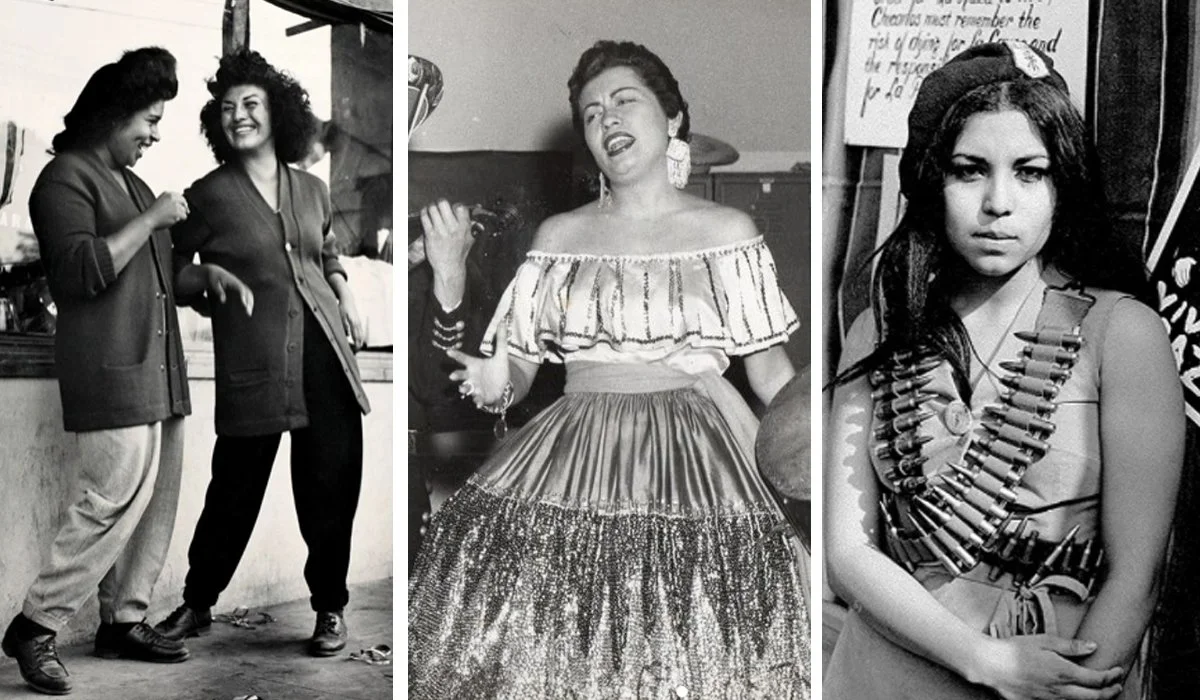Catrinas: an homage to extraordinary Mexican and Chicana women
A series by Artist Esmeralda Rodriguez Eguia
The celebrated Catrina figure is a Mexican icon mixed with cultural identity- as well as a potent decoration synonymous with Dia de los Muertos (Day of the Dead).
First etched by Mexican printmaker Jose Guadalupe Posada (1852-1913) in the early 1900’s, an unsettling skeleton wearing an elaborate hat stares haughtily at the viewer. The absurd scene reflected the wealthy and elite, their greed and wish to take their riches into the afterlife. Mexican muralist Diego Rivera (1886-1957) incorporated the iconic skeleton into one of his frescos, transforming it into a Mexican national symbol.
The artistic ancestor figure now features prominently during the Dia de los Muertos celebration of ancestors, placed on altars and in homes as a reminder of lost loved ones. As wells as a reminder that everyone is equal in death.
Artist Esmeralda Rodriguez Eguia (b. 1988, Roma, Texas) had always admired Catrina figures, and dreamed of having a large collection of her own one day. The idea to create her very own flamboyant skeletons hit her recently at Lincoln Square Potter Studio - Learning Center. She started utilizing the stoneware to delicately compose (etch, carve and slab build) each piece.
Rodriguez Eguia decided to add more meaning to the series she was starting. Connecting each figure to a Mexican or Chicana woman in the 20th century. She used photographs to inspire the pieces- sometimes an exact copy, often times as a loose blueprint. The celebration of these exceptional women, as well as reveling in the bright colors and costumes was inspiring for her.
Rodriguez Eguia’s first sculpture is an homage to women soldiers who fought in the Mexican Revolution (1910-1917), colloquially called “Las Adelitas” . Their participation in the war as spies and soldiers in addition to nurses and caretakers challenged traditional gender roles during the time period. Each figure is an extreme challenge - fiddling with tiny bones and costume details, as well as battling the constant drying of smaller pieces. Arms, legs and heads crack off, but the artist reattaches them and hopes for the best. Her gun slinger was a self-imposed ordeal-
Rodriguez Eguia carved dozens of bullets in a bandolier that encompasses the figure.
Adelita: Mexican Revolutionary Soldadera
Rodriquez Eguia’s second historical appreciation landed on the iconic Flappers of the 1920’s. The artist singled out “Pelonas” (named for their short haircuts), with pants as part of their outfits. The artist wanted to make sure to include an early century example of women not only confidently wearing pants, but not being afraid to assert them self in public.
Angela: Pelona
The 1930’s brought big screen stars to the forefront, and Durango-born Dolores Del Rio made her way into the Hollywood silent films scene. She soon transitioned to sound features, gaining meteoric rise in the U.S., and super-stardom in Mexica (to which she returned in the 40’s). Rodriguez Eguia took on a seated pose for this sculpture, stressing over the exceedingly delicate spine and body positioning. Opalescent China paint was applied to the dress after firing, creating a shimmering affect similar to that caught on the big screen!
Dolores Del Rio: Golden Age Actress
The 1940’s inspired Rodriguez Eguia to create a zoot-suit wearing La Dora Catrina. The zoot suit, originally inspired by African American fashion in Harlem, was adopted by Chicano youth in California, shaping the Pachucho subculture. Chicana women further challenged social norms around race, class, and gender by embracing masculine silhouettes, stylized hairstyles, and traditional Mexican chanclas (leather sandals), forging a unique expression of Chicana identity.
La Dora: Zoot Suiter
Next on the artist’s bucket list of influential Mexican and Mexican-American women was Lola Beltran, reina of Ranchera music in the 1950’s. Rodriguez Eguia created her next big challenge by bringing a more dynamic appearance to the figures. An open mouth and active expression conveyed the singer’s passion.
Lola Beltran: Reina of Ranchera
Rodriguez Eguia build her first “set” for her next sculpture, using the wall behind the figure to paint an influential poem. This piece pays homage to Hilda Reyes Jensen and the student activists who organized the historic 1968 Chicano Student “Blowouts.” These protests, led by Chicano students in East Los Angeles, were pivotal in demanding equal education, bilingual instruction, and greater cultural representation in schools. The wall behind the figure features a stanza from one of the Chicano Movement’s most significant literary works, I Am Joaquín by Rodolfo “Corky” Gonzalez. This poem became a powerful declaration of Chicano identity, addressing themes of resilience, cultural pride, and the struggle for social justice. I Am Joaquín inspired generations, providing the Chicano Student Movement with a voice and unifying symbol in their fight for equality and recognition.
Hilda Reyes Jensen: Brown Beret Student Activist
Rodriguez Eguia’s 1960’s set piece was a jump-off point for her 70’s homage- that of activist and muralist Judy Baca. She was inspired by an image of Baca standing in front of one of her monumental murals depicting “Mi Abuelita”. It depicted her grandmother with her arms open, welcoming the viewer with love. Rodriguez Eguia struggled with the idea of painting a replica of the mural on clay with glazes, but decided to create the figure and decorations by adding 3D components. The abuelita figure appears to reach out to the viewer, an affect Rodriguez Eguia is happy to have achieved.
Judy Baca: Muralist and Activist
Alice Bag, Chicana punk pioneer and author created one of the earliest punk bands in L.A. (with two female lead musicians!). The music was seeped in the Mexican music she grew up in, and lead the group to be at the forefront of originating the hardcore punk sound in the 1980’s. Rodriguez Eguia worked hard to create the leather jacket and jeans that adorn the Bag skeleton. The challenge was trying to see how the folds and curves would sit on the skeletal frame. The leaning, nonchalant figure is set against a wall full of colorful graffiti.
Alice Bag: Chicana Punk Pioneer
Rodriguez Eguia’s final piece to finish out the 20th century is Chavela Vargas, the rebel Ranchera singer. The artist, whose performances were captivating, was born in Puerto Rico, but “adopted” by the Mexican people as their own. Vargas, who had a gruff personality, was one of the first entertainers to negate heteronormativity. Rodriguez Eguia focused on the singer in her characteristic jorongo, a traditional loose outer garment with roots in the Americas. The piece features folds that create movement and interest in the otherwise stiff medium.
Rodriguez Eguia’s Catrina journey pushed her as an artist and an appreciator of the lesser known women of history (in the U.S. anyway). Her exploration of the skeleton and how it would present in different positions, under clothing and expressing emotion pushed her to improve her techniques with each sculpture. Digging into each character’s life and their extraordinary drive also gave the work deeper meaning for her.
Rodriguez Eguia’s family never set up ofrendas (alters) or placed Catrinas in their home during the Dia de los Muertos holiday. After several recent losses (including her grandmother Maria de Jesus Solano and her dog Xochitl ), she now places an alter to help keep their memories alive. These traditions, rooted in indigenous spiritual practices, is a touchstone for her. Her new rituals, as well as exploring the Catrina series, have helped merge her contemporary life with her deep heritage.
Mexican Revolutionary Solder (from left), Angela: Pelona, Dolores del Rio
Zoot Suiters (from left), Lola Beltran, Hilda Reyes Jensen
Judy Baca (from left), Alice Bag, Chavela Vargas
Article/studio photos by Mieke Zuiderweg, Editing by Esmeralda Rodriguez Eguia













